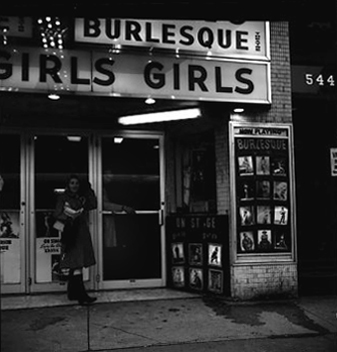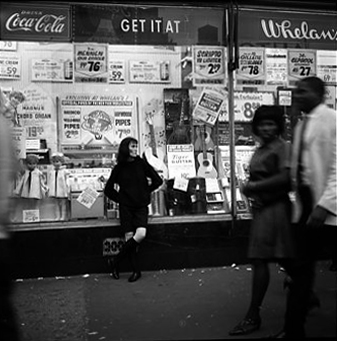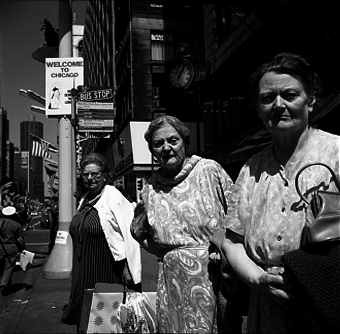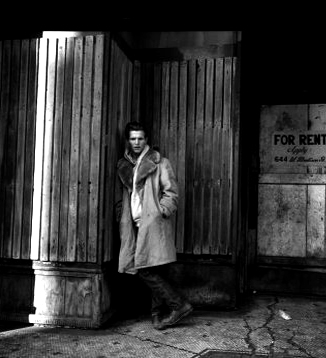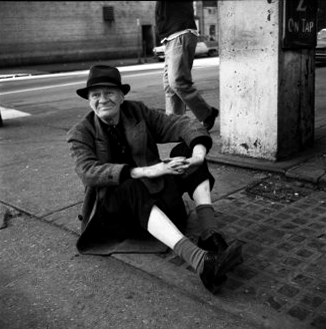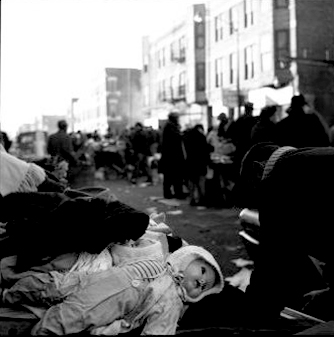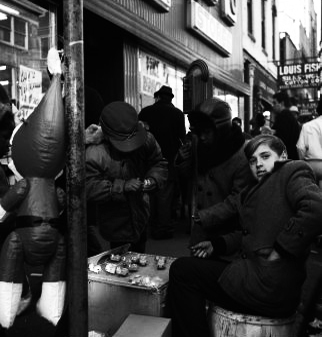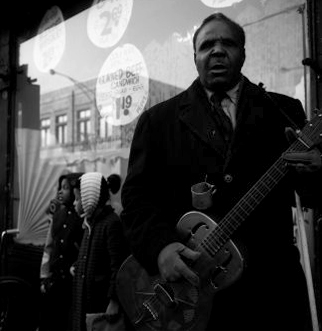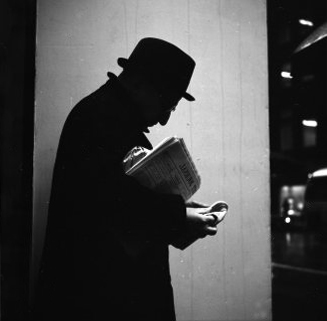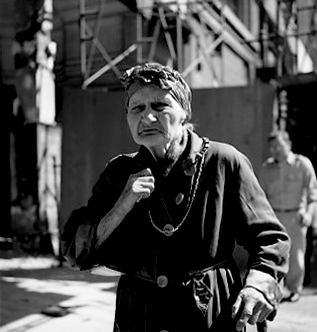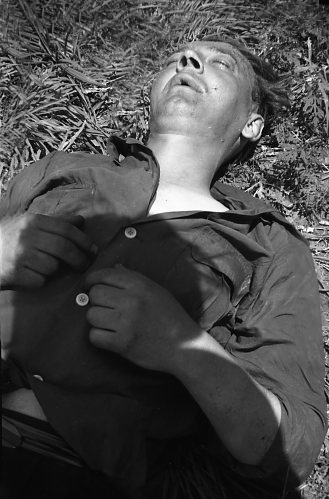Behind the Images: Jeff Goldstein Talks about Vivian Maier
By Kevin Robinson in Arts & Entertainment on Jan 6, 2011 4:00PM
A little over a year ago, the work of a then-unknown street photographer named Vivian Maier became a hit on the internet, telling the story of Chicago seen through the eyes of a Jewish refugee from WW II France who came to the U.S. in the early 1950's. Maier's work came to light after John Maloof bought a box of her negatives at an auction while researching a book about Portage Park. The box didn't yield any historical photos of Portage Park, but they struck him as pretty cool. Her work toiled on in obscurity, admired by Maloof, who wasn't sure what to do with them. After he found her name scribbled on a photo envelope in the box, he googled her, turning up a paid obituary in the Chicago Tribune. She had died just days before. In the meantime, he started posting her work on his blog. After linking his blog to Flickr and posing the question "what do I do with this stuff?" the work went viral, becoming an internet sensation. We ran a photoset of her work around that time as well. Since then he's worked to catalog and publish her vision of post-war Chicago and other locales in the United States and abroad. Tomorrow the first-ever exhibition of her work opens at the Chicago Cultural Center.
Another collector, Jeff Goldstein, has also acquired some 12,000 of her negatives. Making this remarkable story even more unusual is that both collectors, Maloof and Goldstein, have not only worked together to bring Maier's work back to life, but that they've become friends through the project. Maloof told Chicagoist, "Jeff Goldstein has become a good friend and we've opened our collections up to one another for research. This has helped organize information about her history and accurately account for the time line of her work, progress,[and] styles. He has been very supportive and we've been sharing help with one another."
Unlike Goldstein, who is an artist and a cabinet maker, has been involved in the Chicago art scene since the 1970's, through Ed Pashke and the Chicago Imagists, Maloof has no art background. "John's an amazing guy because he really had no art background whatsoever, but he catches on quick and has a very strong aesthetic sense. He had the wherewithal to post the initial photographs with the understanding and the feeling that there was something special about them, although maybe he couldn't articulate it." Goldstein says that Maloof brought Maier's work to the public first, and that he was aware of her work when he acquired his portion of her work. "Initially it was a little bit contentious [at first] and understandably, because John had 90 percent of the collection. But over time he and I have gotten really close together working with the collection. My general philosophy with artwork is that nobody really ever owns this stuff, but that you're going to take care of it and enjoy it and keep it intact for the next generation."
Goldstein has since enlisted the help of freelance art consultant Anne Zakaras to help him archive and preserve Maier's work. "It's very time consuming and very expensive, but it's very exciting, since you never know what the next set of negatives is going to show," he says. They've laid out the 12,000 negatives in chronological order, making traditional contact sheets out of those, and then selecting the photos they think are the strongest. That work intersects with what Maloof is going through, although he's dealing with a much larger body of work. The two have been sharing with each other which images each one has, since there is some overlap between the collections. "In the back of our minds, I think we have the prospect of conjoining the collections together, which would be most appropriate" for the collection as an entire body of work, Goldstein says. Going forward, Goldstein acknowledges that such an undertaking will take a massive amount of funding and time.
Goldstein says that for him and Maloof, there is a real positive side to the work of documenting and sharing Maier's images. "The sense that we're reconstituting somebody. When Ed Paschke died, I helped with his studio, and dismantled that, which is almost in a sense like dismembering him, and it's a similar process, in reverse. This is a much more refreshing process, where we're actually sort of bringing somebody back to life. And this is a case too where the artist is as important as the work."
As for what Vivian Maier might think of all this interest in her work, Goldstein is sanguine. "If she really wanted no one to ever see this she would have destroyed it. I don't know if she ever thought out what to do with it. In some sense, it's of such an unmanageable volume." Noting the impact that her work has had in bringing photography back to the forefront, "I think if she realized that her work was of that caliber, I think she would be for it. Whether or not she had to be present for that, I think she would be totally indifferent. I think she would be totally surprised" that so many people are so excited about her work. "She went through such a mechanical process of shooting, to keep herself connected, it's really more about documenting her own life, there's such a privateness to this, I think she would find it unbelievable that other people have taken such a strong interest in her work. She didn't seem to be real interested in the end product of photography, which is the prints. She seemed more interested in the mechanical process, somehow connecting or attaching herself to what she was seeing through the lens."
Finding Vivian Maier: Chicago Street Photographer starts with an opening reception from 5:30-7:30 Friday at the Chicago Cultural Center, and runs through April 3.
Update: Anne Zakaras got in touch with Chicagoist earlier today to clarify some of Maier's history since the discovery of her photographs: "Since your first 2009 article, we have all discovered that Vivian was actually born in New York City in 1926. Her parents were immigrants. Her father was Austrian and her mother was French. She had a stronger sense of her French heritage since her father died when she was young. As a young child she went back to Europe with her mother and then again returned to New York in the 50's and eventually made it to Chicago. Also, she wasn't Jewish, and it hasn't been confirmed that she was actually a WWII refugee even though that's what has been said by the folks at Central Camera."



